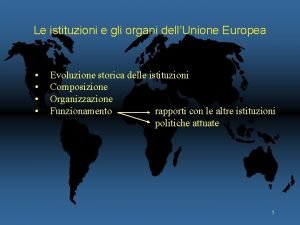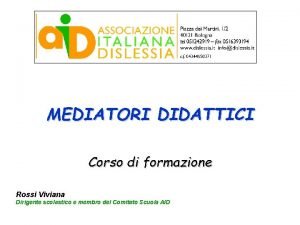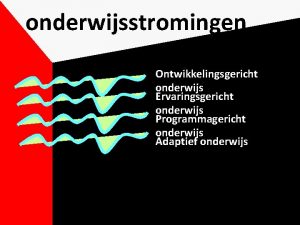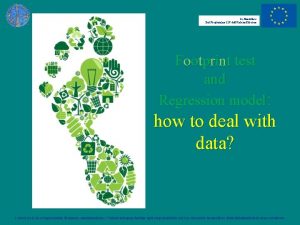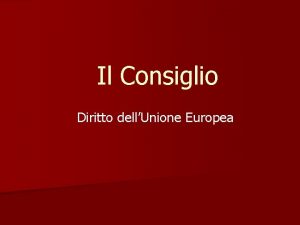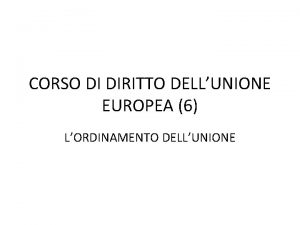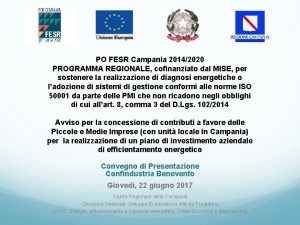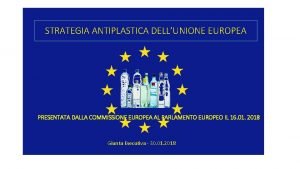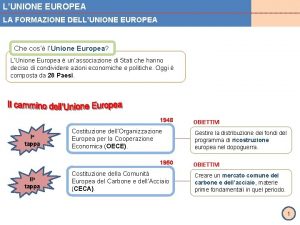Cofinanziato Dal Programma LLP dellUnione Europea The European











- Slides: 11

Co-finanziato Dal Programma LLP dell’Unione Europea The European Climate and Energy Policy Assessment and future prospects L’autore è il solo responsabile di questa comunicazione. L’Unione europea declina ogni responsabilità sull’uso che potrà essere fatto delle informazioni in essa contenute.

The 2020 climate and energy package The EU’s 20 -20 -20 targets adopted in 2009: 20% DECREASE IN THE CONSUMPTION OF PRIMARY ENERGY 20% DECREASE IN CO 2 EMISSIONS 20 % INCREASE IN RENEWABLE ENERGY SOURCES

The implementation of the 2020 Package has showed that not easy to strike the right balance between the 3 objectives of the EU climate and energy policy: • Sustainability; • Security of supply; • Competitiveness.

1. Energy Efficiency Directive The 2012 Energy Efficiency Directive establishes a set of binding measures to help the EU reach its 20% energy efficiency target by 2020. Under the Directive, all EU countries are required to use energy more efficiently at all stages of the energy chain from its production to its final consumption.

1. Specific measures and policies New national measures have to ensure major energy savings for consumers and industry alike. For example: � energy distributors or retail energy sales companies have to achieve 1. 5% energy savings per year through the implementation of energy efficiency measures; � EU countries can opt to achieve the same level of savings through other means such as improving the efficiency of heating systems, installing double glazed windows or insulating roofs; � the public sector in EU countries should purchase energy efficient buildings, products and services; � every year, EU governments will carry out energy efficient renovations on at least 3% of the buildings they own and occupy by floor area; � empowering energy consumers to better manage consumption. This includes easy and free access to data on consumption through individual metering; � large companies will make audits of their energy consumption to help them identify ways to reduce it; � monitoring efficiency levels in new energy generation capacities.

1. Evaluation of the European Action Plan for Energy Efficiency The current 2007 -2012 Plan will be evaluated in 2009 and a revised Action Plan will be presented. It will deal with energy saving potentials and the costeffectiveness of policy tools. The integration of energy efficiency into the broader energy policy and the Energy and Climate Package is planned. It is expected that by 2030, or even 2050, measures taken will be more ambitious. The revised Plan will focus on energy supply, transmission and energy consumption sectors.

2. Renewable energy can be produced from a wide variety of sources including wind, solar, hydro, tidal, geothermal, and biomass. By using more renewables to meet its energy needs, the EU lowers its dependence on imported fossil fuels and makes its energy production more sustainable. The renewable energy industry also drives technological innovation and employment across Europe.

2. 2020 renewable energy targets The EU's Renewable energy directive sets a binding target of 20% final energy consumption from renewable sources by 2020. To achieve this, EU countries have committed to reaching their own national renewables targets ranging from 10% in Malta to 49% in Sweden. They are also each required to have at least 10% of their transport fuels come from renewable sources by 2020. All EU countries have adopted national renewable energy action plans showing what actions they intend to take to meet their renewables targets. These plans include sectorial targets for electricity, heating and cooling, and transport; planned policy measures; the different mix of renewables technologies they expect to employ; and the planned use of cooperation mechanisms.

2. A new target for 2030 Renewables will continue to play a key role in helping the EU meet its energy needs beyond 2020. EU countries have already agreed on a new renewable energy target of at least 27% of final energy consumption in the EU as a whole by 2030. This target is part of the EU's energy and climate goals for 2030.

3. EU greenhouse gas emissions and targets � Around 10% of the greenhouse gases emitted worldwide in 2012 come from the European Union. The EU's share of global emissions is falling as Europe reduces its own emissions and as those from other parts of the world, especially the major emerging economies, continue to grow. With measures taken at European level and by Member States at national level, the EU is well on track towards meeting its targets for cutting greenhouse gas emissions both under its own internal target in the Europe 2020 Strategy and under the Kyoto Protocol's second commitment period (20132020).

3. The EU is on track to meet its EU 2020 target �For 2020, the EU has made a unilateral commitment to reduce overall greenhouse gas emissions from its 28 Member States by 20% compared to 1990 levels which is one of the headline targets of the EU 2020 strategy. �According to latest estimates, total EU greenhouse gas emissions in 2013 fell by 1. 8% compared to 2012, which brings them at around 19% below 1990 levels. This keeps the EU on track to meet its 20% target by 2020. �Although the EU as a whole is on track to deliver as expected, 13 Member States still need additional efforts to meet domestically their 2020 targets. Fifteen Members States are already projected to reach these commitments with existing policies and measures.
 Organi dellunione europea
Organi dellunione europea Cofinanziato
Cofinanziato Dal problema al programma
Dal problema al programma Adulteration of dal with kesari dal mainly causes
Adulteration of dal with kesari dal mainly causes Altum programma
Altum programma Programma teacch
Programma teacch Programma il futuro frozen
Programma il futuro frozen Mediatori didattici elio damiano
Mediatori didattici elio damiano Xbrl portaal
Xbrl portaal Standard business reporting programma
Standard business reporting programma Programmagericht onderwijs
Programmagericht onderwijs Altum programma lauksaimniekiem
Altum programma lauksaimniekiem
